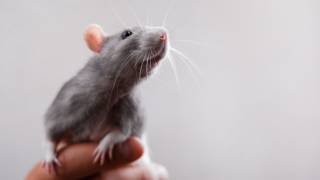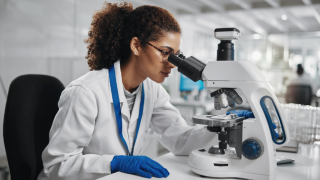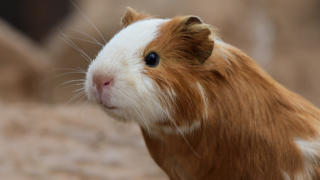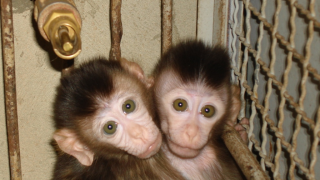Will you stand up for animals this #WorldStrokeDay?
People around the world today will be thinking of those affected by the devastating impact of stroke. We’re asking you to also remember the countless animals who continue to die in gruesome and pointless stroke tests. Animals have been used in stroke research for over 160 years. Yet there is still no cure for the disease, and it remains one of the world’s leading causes of death. Join us in our work to creating a world where more humane and human relevant approaches are developed instead.
Much current research focuses on artificially inducing the two main types of stroke in animals:
- ischemic stroke - which is caused by lack of blood flow
- haemorrhagic stroke - caused by bleeding.
Mice and rats are the most commonly used species in these experiments. Larger species such as dogs and monkeys are also used.
Ischaemic stroke experiments typically involve blocking blood vessels to an animal’s brain. This is done in order to deprive his or her brain of oxygen so that parts of it to die.
This can be done by the use of tourniquets or neck cuffs to compress blood vessels to the brain, or by surgically exposing then sealing or cutting major arteries. The effects of these barbaric experiments can be devastating and even lethal to the animals used.
Haemorrhagic stroke experiments rely on the production of a bleed in specific areas of an animal’s brain. This is usually done by injecting blood from another part of the animal’s body directly into his or her brain. Or it can be done by injecting a bacterial enzyme into the animal’s brain that causes his or her blood vessels to rupture, leading to a bleed in his or her brain several hours later.
These experiments are extremely artificial when compared to the human situation.
The symptoms of stroke in the animals used in these experiments usually occur immediately as a result of the surgical intervention. They do not take into account the many complications and risk factors that lead to stroke in humans. There are also important differences in brain anatomy between humans and animals that limit the usefulness of these studies.
A review of over 1,000 potential neuroprotective stroke treatments that had proven successful in animals, found that only approximately 100 progressed to human trials. None were successful.1
In fact there is only one drug available to treat stroke, which was approved by the US Food and Drug Administration back in 1996. The drug can only be used to treat ischaemic stroke and does not work if taken any later than 4.5 hours after symptoms start.
Clearly, the current approach of studying stroke in animals is not working.
Dr. David Wiebers, Professor of Neurology at the Mayo Clinic, said “Ultimately, the answer to many of our questions regarding the underlying pathophysiology and treatment of stroke do not lie within continued attempts to model the human situation more perfectly in animals, but rather with the development of techniques to enable the study of more basic metabolism, pathophysiology and anatomical imaging detail in living humans […] Over-reliance upon such animal models may impede rather than advance scientific progress in the treatment of this disease”.2
Sources:
- 1,026 experimental treatments in acute stroke. (2006). Annals of Neurology, 59: 467-477.
- Animal models of stroke: are they relevant to human disease? (1990). Stroke; 21(1): 1-3.












